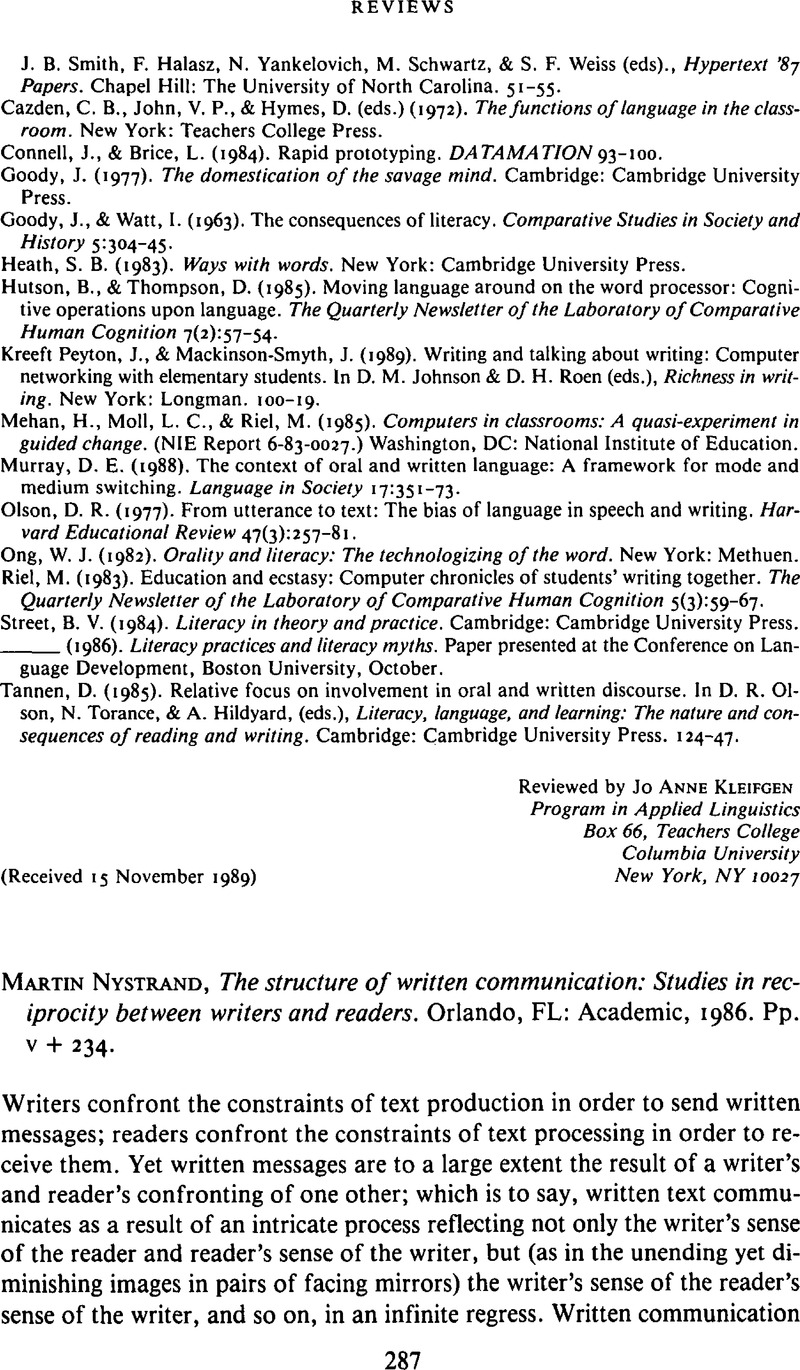No CrossRef data available.
Article contents
Martin Nystrand, The structure of written communication: Studies in reciprocity between writers and readers. Orlando, FL: Academic, 1986. Pp. v + 234.
Published online by Cambridge University Press: 18 December 2008
Abstract
An abstract is not available for this content so a preview has been provided. Please use the Get access link above for information on how to access this content.

- Type
- Book Review
- Information
- Copyright
- Copyright © Cambridge University Press 1990
References
REFERENCES
Bereiter, C., & Scardamalia, M. (1981). From conversation to composition: The role of instruction in a developmental process. In Glaser, R. (ed.), Advances in instructional psychology. Vol. 2. Hillsdale, NJ: Erlbaum.Google Scholar
Hirsch, E. D. (1977). The philosophy of composition. Chicago: The University of Chicago Press.Google Scholar
Nystrand, M. (1982). Rhetoric's “audience” and linguistics' “speech community”: Implications for understanding writing, reading, and text. In Nystrand, M. (ed.), What writers know: The language, process, and structure of written discourse. New York: Academic.Google Scholar
Olson, D. R. (1977). From utterance to text: The bias of language in speech and writing. The Harvard Educational Review 47: 257–81.CrossRefGoogle Scholar
Stubbs, M. (1980). Language and literacy: The sociolinguistics of reading and writing. London: Routledge & Kegan Paul.Google Scholar
Vachek, J. (1973). Written language: General problems and problems of English. The Hague: Mouton.CrossRefGoogle Scholar




